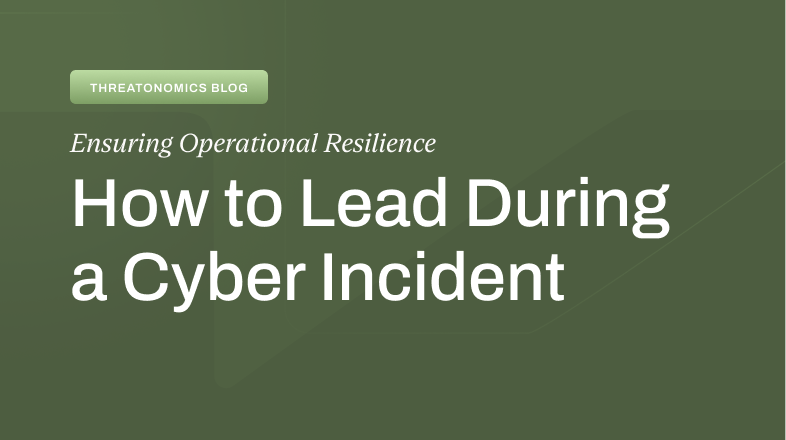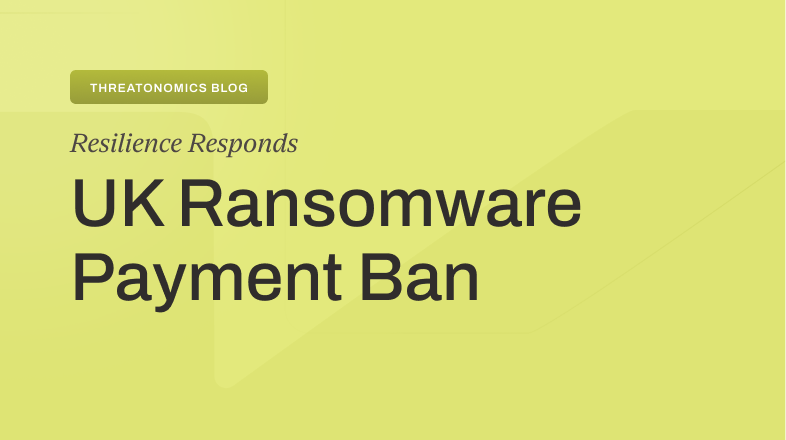Digital threats are not just possibilities but inevitabilities; understanding and calculating cyber risk is more than a precaution – it’s a necessity. Understanding cybersecurity metrics is essential to safeguarding and improving business operations.
Calculating cyber risks simplifies complex issues and empowers professionals to communicate them clearly to improve their organization’s digital security. This requires a comprehensive approach, including cyber risk assessment fundamentals and developing a way to translate it into business terms..
The Fundamentals of Cyber Risk Assessments
A cyber risk assessment is the foundation of any robust cybersecurity strategy. It identifies and analyzes potential threats to an organization’s digital assets, and presents them in a way that supports risk based planning and decision making. Cyber Risk Quantification (CRQ), the assessment and quantification of an organization’s cyber risk in business terms, is essential to ensure that the organization is prepared and resilient to emerging threats and vulnerabilities.
- Identifying Threats and Vulnerabilities: This step involves pinpointing potential cybersecurity threats to, and vulnerabilities within an organization’s network and systems.
- Evaluating Current Cybersecurity Measures: Assessing existing IT and cybersecurity policies and incident response plans and practices to determine their effectiveness and identify areas for improvement.
- Developing a comprehensive Incident Response Plan: A robust plan should cover key activities including:
- Risk identification and assessment
- Implementation of protective measures
- Detection of potential cyber threats
- Response to and neutralization of identified threats
- Recovery and restoration of systems post-attack.
- Consistent Cyber Hygiene and Testing: This encompasses maintaining up-to-date security measures, such as patch management and strong password policies, and routine testing for vulnerabilities through penetration testing.
- Training and Awareness: Educating cybersecurity teams and general employees about cybersecurity best practices and their roles in incident response is essential.
- Post-Incident Analysis: Evaluating the effectiveness of the response to cyber incidents and making necessary improvements.
Aligning with established frameworks like the NIST Cybersecurity Framework and ISO 27001 is recommended for a structured approach to cyber risk management. Continually adapting and updating cybersecurity strategies are essential to counter evolving threats and technologies.
Qualitative vs Quantitative: Approaches to Cyber Risk Calculation
There are two primary methodologies in cyber risk calculation: qualitative and quantitative. Qualitative assessments, often narrative, focus on the subjective analysis of risk factors. They help understand the context of risks but need more specificity. On the other hand, quantitative assessments use numerical values and statistical methods to estimate risk, providing a more measurable approach. However, they may need to capture the nuanced aspects of cyber threats.
Factors influencing cyber risk calculation include industry-specific risks and the impact of emerging technologies. When considering cyber risk assessment methodologies, it’s essential to differentiate between qualitative and quantitative approaches.
Qualitative Risk Analysis employs ordinal scales, such as 1-5 or color-coded systems, to categorize cyber risks based on likelihood and impact. This method is beneficial for initial risk identification, offering a visual overview of the severity of various risks. However, it’s subjective and may lead to inflated risk perceptions due to its reliance on personal judgment. This approach is often the first step in risk management, helping quickly identify areas requiring more in-depth analysis.
Quantitative Risk Analysis, on the other hand, quantifies risks using numerical values and statistical methods. This approach, exemplified by models like FAIR (Factor Analysis of Information Risk), aims to reduce biases and inconsistencies by translating risks into financial terms. FAIR, for instance, evaluates the frequency and magnitude of risks by breaking them down into parts, enabling a more precise risk assessment. This method is particularly effective for detailed analysis and supports informed decision-making regarding risk mitigation and allocation of resources.
Qualitative and quantitative analyses are critical in managing cyber risks, each playing a unique role at different stages of the risk management process. While qualitative analysis offers a quick way to identify risks, quantitative analysis provides detailed, objective data for crucial decision-making. The choice between these methods depends on various factors, including an organization’s specific needs, the complexity of the risks involved, and the data available for analysis.
Advancing Organizational Cybersecurity: Strategies for Risk Management and Resilience
One of the primary challenges in cyber risk calculation is the ever-changing nature of cyber threats. Organizations must continuously update their risk assessment strategies to adapt to new threats and technologies. Best practices include regular staff training, investing in modernized technology, and conducting frequent risk assessments. The 2023 Cost of Data Breach report by IBM emphasizes the importance of these practices in mitigating cyber risks.
This approach includes a variety of solutions focused on improving the management of digital risks within a business.
- Conduct Comprehensive Risk Assessments: Identify and analyze weaknesses in your digital infrastructure, providing you with a clear understanding of where you may need to strengthen your defenses.
- Implement Predictive Analytics: You can avoid potential threats by integrating predictive analytics into your cybersecurity strategy.
- Develop Robust Incident Response Plans: Preparing to act quickly and effectively in a breach is crucial for minimizing damage and restoring operations promptly.
- Invest in Staff Training and Awareness: Cybersecurity is as much about people as technology.
- Embrace Continuous Monitoring and Improvement: Cybersecurity is not a set-and-forget solution.
Incorporating these strategies into your cybersecurity plan can significantly enhance your organization’s ability to manage cyber risks. Each step is a move towards a more resilient and secure operational environment.
The Continuous Journey of Cyber Risk Management
Cyber risk management is an ongoing journey, not a one-time task. This article has explored various facets of cyber risk calculation, from methodologies and tools to overcoming challenges. The key takeaway is the importance of continuous assessment and adaptation in an organization’s cyber risk strategy.
By staying informed and proactive, businesses can safeguard their digital assets against the ever-present threat of cyber attacks. Empower your organization’s cyber defense: Learn to master cyber risk with the Cyber Resilience approach.








